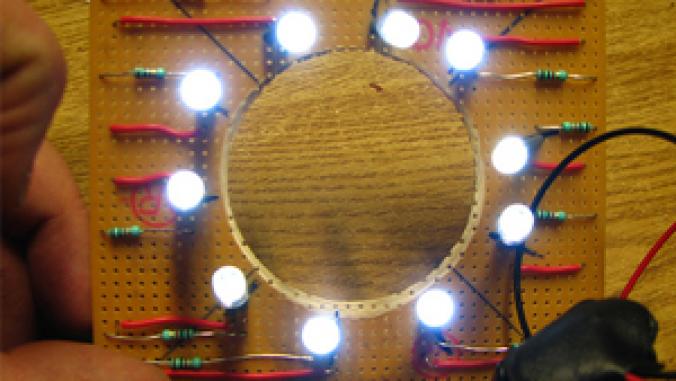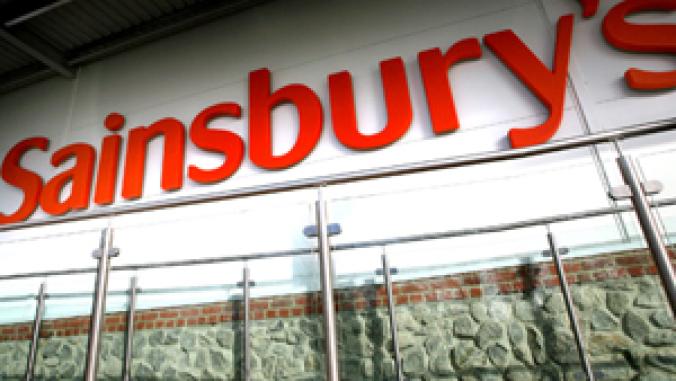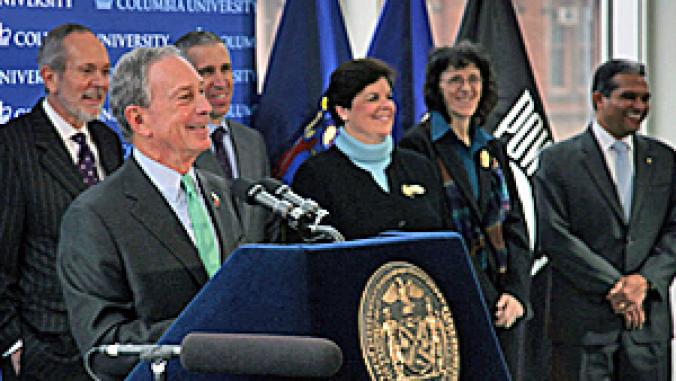The Energy Payoff
With benchmarking and a long-term view on energy efficiency upgrades, USAA saves more than $1 million annually at its San Antonio headquarters. By Abigail May
With benchmarking and a long-term view on energy efficiency upgrades, USAA saves more than $1 million annually at its San Antonio headquarters. By Abigail May
Everybody loves a success story. And where facilities management is concerned, one need look no farther than San Antonio, where a large financial services company’s long-term commitment to energy efficiency is reaping big rewards. In addition to delivering $1.1 million in annual savings, USAA’s energy focus recently landed the company a 2003 Energy Star® award for its San Antonio global headquarters — the second-largest privately owned building in the nation and the largest structure ever to receive Energy Star best-in-class status.
USAA’s energy accomplishments make for a facility management success story, to be sure. But they also offer a useful case study that illustrates many lessons of Facility Management 101: The benefits of taking the long view on energy upgrades; the value of benchmarking; the importance of open communication with senior management and of multilevel buy-in; and the rewards of doing the right thing where energy is concerned.
Diving in Head First
USAA’s pursuit of Energy Star accolades did not begin with the 4.6-million-square-foot San Antonio headquarters building, which is home to some 15,000 USAA employees. It began with Brenna Walraven. As executive director of property management for USAA’s subsidiary, USAA Real Estate Co., Walraven oversees a portfolio of 35 investment properties across the country. A long-time believer in the importance of energy efficiency, Walraven approached her supervisors about her desire to pursue Energy Star labeling across the investment portfolio in 2000.
Working in concert with USAA Real Estate Co.’s engineering contractor, and with support from Energy Star, Walraven and her associates began benchmarking all facilities under their management using Energy Star’s online tools. Walraven’s staff received training in the use of the Portfolio Manager tool and began aggressively pursuing the opportunities for efficiency gains identified within their buildings. Monthly reports from engineers included specific updates on Energy Star progress and activities, and the effort became a primary focus for Walraven’s team.
Three years later, roughly 40 percent of the buildings in USAA Real Estate Co.’s portfolio have now achieved the score of 75 that is necessary to earn an Energy Star label. And, while not every facility in the portfolio can expect to ever achieve designation as a “best in class” energy performer — occupancy and usage considerations knock some out of the running — USAA Real Estate Co.’s overall efforts garnered Energy Star’s Partner of the Year award for 2002. What’s more, the cost-saving and marketing benefits of the initiative have made Energy Star believers out of management at all levels.
Executives in USAA’s corporate division were among those paying attention. Following the lead of its subsidiary, USAA began pursuing Energy Star designation for its San Antonio headquarters building — one of roughly 10 corporate-occupied facilities across the country — early this year. A few months later, an Energy Star plaque was hanging in that facility’s lobby — a validation, executives say, of the company’s long-term focus on energy.
With a monthly energy bill that routinely exceeds $500,000, it’s not hard to see why bottom-line savings was a major incentive for USAA to pursue energy-efficiency upgrades in its headquarters building. Indeed, the facility’s energy improvements — many of them made years before Energy Star labeling became a goal—have yielded tangible results. For example, a $900,000 retrofit of 18,000 fluorescent fixtures from T-12 lamps with magnetic ballasts to T-8 lamps with electronic ballasts yields annual energy savings of $110,000 and operation and maintenance savings of $137,000. Shutting off the escalators after hours saves 1.1 million kilowatt-hours a year, saving $46,000. Reducing light levels in parking garages in the after-hours saves 1.3 million kwh, or $56,000, per year.
But since the late 1980s, when USAA began making energy-efficiency improvements to the early-’70s-era facility, the incentive has been more than just financial.
“Through the years we have focused on providing a world-class work environment for our employees, which means periodically upgrading,” says Howard Gelfer, vice president of facilities management for USAA. “We have adopted an energy focus both because it is good for the bottom line and because it is the right thing to do.”
Thanks to that long-term philosophy, the process of earning Energy Star labeling for the San Antonio facility was not a difficult one. Despite its size, huge data center, and high energy-consuming amenities like fitness centers and cafeterias, the building simply did not have far to go. At the same time, however, it had less to gain financially from the Energy Star process than many other facilities would.
“In that region of the country, the kilowatt-hour rate is around 7 cents,” says Stuart Brodsky, program manager for Energy Star’s commercial property markets. “That means they were looking at some longer payback periods because their energy costs overall were already relatively low. The fact that they still pursued and are continuing to pursue additional improvements indicates to me that the commitment is both fundamental and well communicated. They look for both payback and the broader environmental opportunity.”
USAA Real Estate Co. has also reaped significant bottom-line benefits, above and beyond its energy savings, as a result of the marketing edge provided by its energy commitment and, specifically, its Energy Star successes. Walraven says she believes the organization gains an important edge when tenants, particularly in tough energy markets like California’s, start asking pointed questions.
“The label helps to set their organization apart to financial communities,” says Energy Star’s Jean Lupinacci. “They can say, ‘We are good at management; we soundly manage our resources, we are not wasting.’ For some audiences that is a very important message, and it’s one they can send to both employees and tenants.”
By all accounts, USAA’s success in pursing Energy Star “best in class” status has come as a result of both this long-standing commitment to energy efficiency and of exemplary teamwork between USAA’s facility executives and the organization’s top management.
“USAA’s commitment went all the way through the organization chart, so it wasn’t surprising to see the building score as well as it did,” says Brodsky. “They have a truly integrated approach. As a rule, all of the organizations that are excelling in energy management have integrated approaches where there are cross-departmental energy teams, and where people at every administrative level have energy efficiency as a specific part of their job description.”
“Good facility management and energy conservation translate to good business in general,” says USAA’s Gelfer. “We have been fortunate enough to have leadership that recognizes that.”
Which is not to say that facility executives have not faced challenges in convincing top management of the wisdom of some investments.
“In today’s environment you look at these projects in terms of the benefits but also the impact of the costs,” says Wayne Peacock, senior vice president of corporate real estate. “We have had to demonstrate payback in very concrete terms, and we have really been put through the paces on some of these decisions.”
Further highlighting the integrated mindset that has set USAA apart as a top energy performer, Peacock says, “We look at that return both in terms of cash savings and in terms of benefits to the employees.”
Benchmarking is Key
Within USAA’s corporate real estate division and for subsidiary USAA Real Estate Co., energy efficiency is, increasingly, a way of life. This reality was underscored, though certainly not created, by the Energy Star process over the past several years.
“The lesson in this story,” says Energy Star’s Brodsky, “is not that USAA had a complex building and found that they were able to make it energy efficient. The interesting thing from my perspective is that they want to make it more efficient. They want to benchmark the building next year and have a score that is better than this year’s.”
Toward that end, USAA’s corporate real estate division is moving to the next step by looking at opportunities to further trim energy usage. One possibility: integrating the operations of the San Antonio facility’s two mechanical plants so that they can effectively take turns servicing the campus rather than operating both plants at all times.
The same attitude prevails across USAA Real Estate Co., where Walraven has found that the ability to benchmark against other facilities is key to ongoing improvements.
She says a commitment to benchmarking is one of the key lasting outcomes of the Energy Star process. Constant evaluation of all facilities’ performance and identification of ways to boost efficiency even incrementally form a backbone of efforts to further boost the efficiency of the entire portfolio.
“When you go from zero to say 80 percent, that’s great,” says Walraven. “But to go from 80 to 95 percent is hard. There is no more low-hanging fruit. That is certainly our challenge going forward.”
Abigail May is a freelance writer in Philadelphia who specializes in writing about facilities.
How Did You Do That?
USAA’s success in Energy Star is the result of a long-term focus on energy, not of any one retrofit. The following are some of the specific energy-savings steps the organization has implemented to help its global headquarters building achieve and maintain best-in-class energy performance:
This article first appeared in July 2003 issue of Building Operating Management.
Everybody loves a success story. And where facilities management is concerned, one need look no farther than San Antonio, where a large financial services company’s long-term commitment to energy efficiency is reaping big rewards. In addition to delivering $1.1 million in annual savings, USAA’s energy focus recently landed the company a 2003 Energy Star® award for its San Antonio global headquarters — the second-largest privately owned building in the nation and the largest structure ever to receive Energy Star best-in-class status.
USAA’s energy accomplishments make for a facility management success story, to be sure. But they also offer a useful case study that illustrates many lessons of Facility Management 101: The benefits of taking the long view on energy upgrades; the value of benchmarking; the importance of open communication with senior management and of multilevel buy-in; and the rewards of doing the right thing where energy is concerned.
Diving in Head First
USAA’s pursuit of Energy Star accolades did not begin with the 4.6-million-square-foot San Antonio headquarters building, which is home to some 15,000 USAA employees. It began with Brenna Walraven. As executive director of property management for USAA’s subsidiary, USAA Real Estate Co., Walraven oversees a portfolio of 35 investment properties across the country. A long-time believer in the importance of energy efficiency, Walraven approached her supervisors about her desire to pursue Energy Star labeling across the investment portfolio in 2000.
Working in concert with USAA Real Estate Co.’s engineering contractor, and with support from Energy Star, Walraven and her associates began benchmarking all facilities under their management using Energy Star’s online tools. Walraven’s staff received training in the use of the Portfolio Manager tool and began aggressively pursuing the opportunities for efficiency gains identified within their buildings. Monthly reports from engineers included specific updates on Energy Star progress and activities, and the effort became a primary focus for Walraven’s team.
Three years later, roughly 40 percent of the buildings in USAA Real Estate Co.’s portfolio have now achieved the score of 75 that is necessary to earn an Energy Star label. And, while not every facility in the portfolio can expect to ever achieve designation as a “best in class” energy performer — occupancy and usage considerations knock some out of the running — USAA Real Estate Co.’s overall efforts garnered Energy Star’s Partner of the Year award for 2002. What’s more, the cost-saving and marketing benefits of the initiative have made Energy Star believers out of management at all levels.
Executives in USAA’s corporate division were among those paying attention. Following the lead of its subsidiary, USAA began pursuing Energy Star designation for its San Antonio headquarters building — one of roughly 10 corporate-occupied facilities across the country — early this year. A few months later, an Energy Star plaque was hanging in that facility’s lobby — a validation, executives say, of the company’s long-term focus on energy.
With a monthly energy bill that routinely exceeds $500,000, it’s not hard to see why bottom-line savings was a major incentive for USAA to pursue energy-efficiency upgrades in its headquarters building. Indeed, the facility’s energy improvements — many of them made years before Energy Star labeling became a goal—have yielded tangible results. For example, a $900,000 retrofit of 18,000 fluorescent fixtures from T-12 lamps with magnetic ballasts to T-8 lamps with electronic ballasts yields annual energy savings of $110,000 and operation and maintenance savings of $137,000. Shutting off the escalators after hours saves 1.1 million kilowatt-hours a year, saving $46,000. Reducing light levels in parking garages in the after-hours saves 1.3 million kwh, or $56,000, per year.
But since the late 1980s, when USAA began making energy-efficiency improvements to the early-’70s-era facility, the incentive has been more than just financial.
“Through the years we have focused on providing a world-class work environment for our employees, which means periodically upgrading,” says Howard Gelfer, vice president of facilities management for USAA. “We have adopted an energy focus both because it is good for the bottom line and because it is the right thing to do.”
Thanks to that long-term philosophy, the process of earning Energy Star labeling for the San Antonio facility was not a difficult one. Despite its size, huge data center, and high energy-consuming amenities like fitness centers and cafeterias, the building simply did not have far to go. At the same time, however, it had less to gain financially from the Energy Star process than many other facilities would.
“In that region of the country, the kilowatt-hour rate is around 7 cents,” says Stuart Brodsky, program manager for Energy Star’s commercial property markets. “That means they were looking at some longer payback periods because their energy costs overall were already relatively low. The fact that they still pursued and are continuing to pursue additional improvements indicates to me that the commitment is both fundamental and well communicated. They look for both payback and the broader environmental opportunity.”
USAA Real Estate Co. has also reaped significant bottom-line benefits, above and beyond its energy savings, as a result of the marketing edge provided by its energy commitment and, specifically, its Energy Star successes. Walraven says she believes the organization gains an important edge when tenants, particularly in tough energy markets like California’s, start asking pointed questions.
“The label helps to set their organization apart to financial communities,” says Energy Star’s Jean Lupinacci. “They can say, ‘We are good at management; we soundly manage our resources, we are not wasting.’ For some audiences that is a very important message, and it’s one they can send to both employees and tenants.”
By all accounts, USAA’s success in pursing Energy Star “best in class” status has come as a result of both this long-standing commitment to energy efficiency and of exemplary teamwork between USAA’s facility executives and the organization’s top management.
“USAA’s commitment went all the way through the organization chart, so it wasn’t surprising to see the building score as well as it did,” says Brodsky. “They have a truly integrated approach. As a rule, all of the organizations that are excelling in energy management have integrated approaches where there are cross-departmental energy teams, and where people at every administrative level have energy efficiency as a specific part of their job description.”
“Good facility management and energy conservation translate to good business in general,” says USAA’s Gelfer. “We have been fortunate enough to have leadership that recognizes that.”
Which is not to say that facility executives have not faced challenges in convincing top management of the wisdom of some investments.
“In today’s environment you look at these projects in terms of the benefits but also the impact of the costs,” says Wayne Peacock, senior vice president of corporate real estate. “We have had to demonstrate payback in very concrete terms, and we have really been put through the paces on some of these decisions.”
Further highlighting the integrated mindset that has set USAA apart as a top energy performer, Peacock says, “We look at that return both in terms of cash savings and in terms of benefits to the employees.”
Benchmarking is Key
Within USAA’s corporate real estate division and for subsidiary USAA Real Estate Co., energy efficiency is, increasingly, a way of life. This reality was underscored, though certainly not created, by the Energy Star process over the past several years.
“The lesson in this story,” says Energy Star’s Brodsky, “is not that USAA had a complex building and found that they were able to make it energy efficient. The interesting thing from my perspective is that they want to make it more efficient. They want to benchmark the building next year and have a score that is better than this year’s.”
Toward that end, USAA’s corporate real estate division is moving to the next step by looking at opportunities to further trim energy usage. One possibility: integrating the operations of the San Antonio facility’s two mechanical plants so that they can effectively take turns servicing the campus rather than operating both plants at all times.
The same attitude prevails across USAA Real Estate Co., where Walraven has found that the ability to benchmark against other facilities is key to ongoing improvements.
She says a commitment to benchmarking is one of the key lasting outcomes of the Energy Star process. Constant evaluation of all facilities’ performance and identification of ways to boost efficiency even incrementally form a backbone of efforts to further boost the efficiency of the entire portfolio.
“When you go from zero to say 80 percent, that’s great,” says Walraven. “But to go from 80 to 95 percent is hard. There is no more low-hanging fruit. That is certainly our challenge going forward.”
Abigail May is a freelance writer in Philadelphia who specializes in writing about facilities.
How Did You Do That?
USAA’s success in Energy Star is the result of a long-term focus on energy, not of any one retrofit. The following are some of the specific energy-savings steps the organization has implemented to help its global headquarters building achieve and maintain best-in-class energy performance:
- Kilowatt usage throughout the facility is monitored routinely.
- Lighting systems use energy-efficient lamps and ballasts.
- Energy management and control systems monitor air conditioning and lights.
- SCADA monitors and controls electrical distribution systems.
- Motion sensors control lighting in conference rooms and offices.
- Escalators are shut down when not in use.
- Washing machines in the fitness center are high-efficiency.
- Chilled water in the cooling system is maintained at a slightly higher temperature.
- Motors in pumps and air handling units use variable frequency drives.
This article first appeared in July 2003 issue of Building Operating Management.




